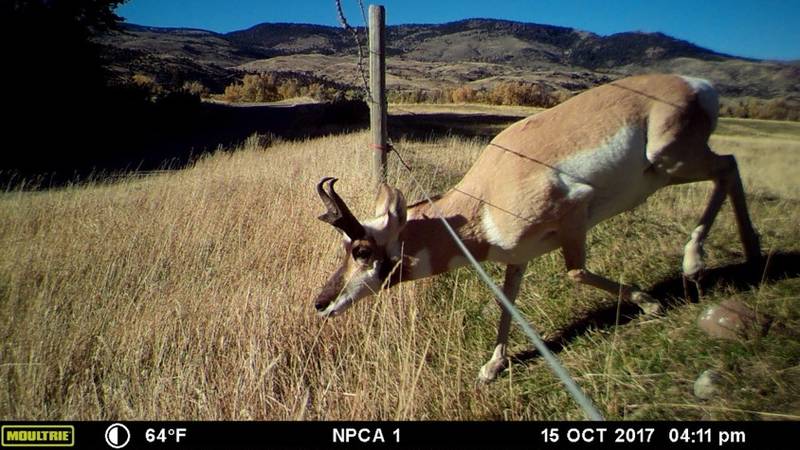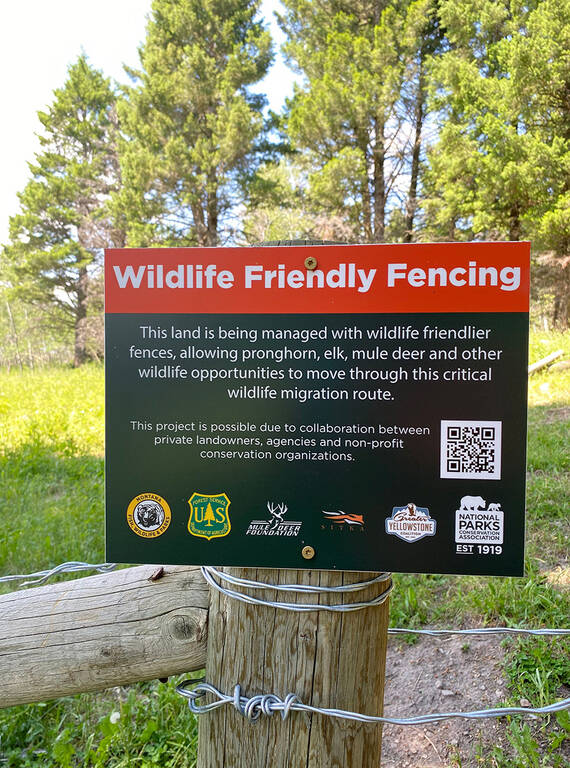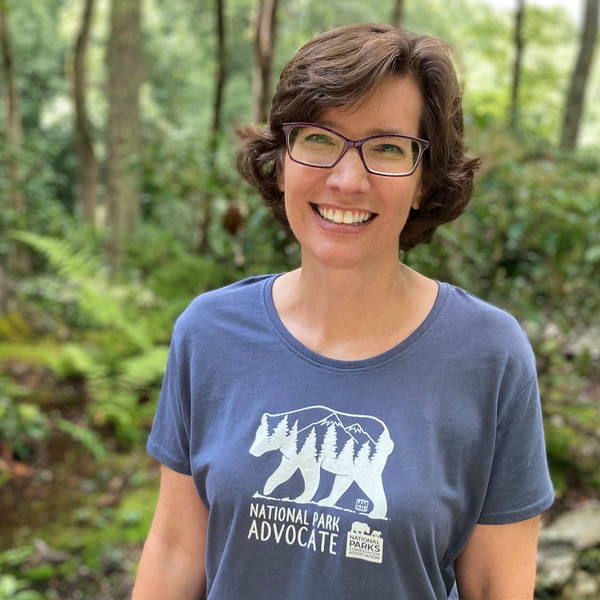Species in the larger Yellowstone ecosystem are making a comeback and building resiliency thanks to support from park lovers to remove fencing and create safer road crossings.
Pronghorn can run at 30 mph indefinitely with top speeds pushing 60 mph, making the species the fastest land mammal in North America. While their sprinting may be Olympic-medal-worthy, their ability to jump over fences that block their migration routes is not.
For the past 100 years, livestock fences and other development around Yellowstone National Park have stopped many pronghorn in their tracks, reducing the size of their accessible habitat and contributing to the park’s shrinking pronghorn population.
The National Parks Conservation Association’s wildlife connectivity program, celebrating its 15th year, is helping the herd make a comeback. After the Yellowstone Park pronghorn herd hit a low of 190 in 2009, its numbers have since more than doubled, in part due to NPCA’s efforts to increase access to quality habitat. A total of 481 were counted this year. Additionally, people are spotting pronghorn moving further north into the Paradise Valley, something not seen in decades. This is good news, as it ensures the park herd does not remain genetically isolated.
National parks and their adjacent lands provide some of the best — and increasingly, some of the last — remaining habitats for many species. As a high plateau, Yellowstone is mostly a summer range for hoofed mammals, called ungulates. The park’s last surviving pronghorn population migrates out of the heart of Yellowstone each fall to a small section of suitable winter range in the Gardiner Basin and beyond the park into a mosaic of public and private lands.

Pronghorn passing under a NPCA wildlife friendly fence on private property in the Paradise Valley.
Photo by NPCASince 2010, NPCA has worked with private landowners and public land managers to restore two historic winter migratory pathways — one northward to Montana’s Paradise Valley and a second one westward and then north to Montana’s Madison Valley as well as south into Idaho — by removing fencing or modifying the fences so pronghorn can easily dart under a smooth, bottom wire.
The goal has been to create fences designed to reduce wildlife injuries and decrease damage to the fence while still meeting the fence’s purpose, such as to contain livestock. Private lands, especially ranchlands, play a crucial role in maintaining suitable wildlife habitat.
As of this summer, NPCA has built relationships with more than 35 private landowners and coordinated more than 1,500 volunteers, from students to veterans, who work a day at a time on fence projects. A few hours of work results in generational benefits for pronghorn. So far, the project has mitigated more than 65 miles of barriers to wildlife movement.
These efforts demonstrate that people who care and are willing to get involved can make a meaningful contribution to the protection of national park wildlife and support the needs of local communities, said Pat Todd, NPCA’s Volgenau Greater Yellowstone Ecosystem Fellow, who has led the initiative for the past two years.
“This work isn’t only important for pronghorn, it’s important for the other ungulates — sheep, mountain goats, elk, mule deer,” Todd said.

A sign installed by NPCA explaining fence modifications.
© NPCAPronghorn are an ideal species to study, she added, because they pace back and forth along a barrier, rather than push their way through at risk of becoming tangled like other wildlife do, which allows researchers to identify trouble spots.
But the data can help all species.
“We’ve widened our breadth of work and our thinking about removing barriers on the landscape, both fencing and road barriers, which is helping all wildlife move more easily,” Todd said.
Learn more about NPCA’s Yellowstone wildlife connectivity program.
Solutions to wildlife-vehicle collisions
Yellowstone National Park continues to see record visitation, and with it, the risk for more wildlife-vehicle collisions.
On a 55-mile stretch of US Highway 89 from Livingston to Gardiner, Montana, which weaves between public and private lands and serves as a primary entrance to Yellowstone, wildlife-vehicle collisions account for half of all reported crashes — a rate five times the state average and 10 times the national average. More than 160 collisions a year occur here with deer, elk, moose, bison, bears, bighorn sheep and other animals as they cross the road for food, water, mating or seasonal migration.
That data comes from a comprehensive assessment released in March by Yellowstone Safe Passages, a community-led effort NPCA staff helped create in 2020 to find long-term solutions to the wildlife-vehicle collisions and continues to remain active in.
Such collisions have cost the public an estimated $32 million in vehicle damage over the past 10 years and most often kill the wildlife involved. People can get injured, too.
Yellowstone Safe Passages conducted its assessment in partnership with Bozeman-based Center for Large Landscape Conservation and Montana State University’s Western Transportation Institute that detailed collision sites along the corridor.
Roughly half of all highway accidents on US Highway 89 between Livingston and Gardiner are wildlife related — a rate five times the state average and 10 times the national average.
Informed by science, engineering and local knowledge, the assessment identified seven priority sites for potential solutions — including new overpasses and underpasses, retrofits to existing structures and animal detection systems — that could be installed over the next 10 years.
Yellowstone Safe Passages has applied for state funding to support the recommendations and received backing to begin an engineering feasibility study for two potential overpass structures next year.
More than just islands on the landscape
Stay On Top of News
Our email newsletter shares the latest on parks.
Many of the wildlife visitors see each year in Yellowstone National Park during the summer have spent part of the year outside the park. Todd says it’s important to think of national parks as more than just islands on the landscape — they’re one part of a much larger ecosystem.
“Thinking about climate and changing habitats due to shifting weather patterns, wildlife are going to have to move to adapt and be resilient. If they can’t move because of barriers, it makes matters worse. So NPCA is asking, what are the barriers, how do they affect different species and what can be done about it?”
About the author
-
 Linda Coutant Staff Writer
Linda Coutant Staff WriterAs staff writer on the Communications team, Linda Coutant manages the Park Advocate blog and coordinates the monthly Park Notes e-newsletter distributed to NPCA’s members and supporters. She lives in Western North Carolina.


